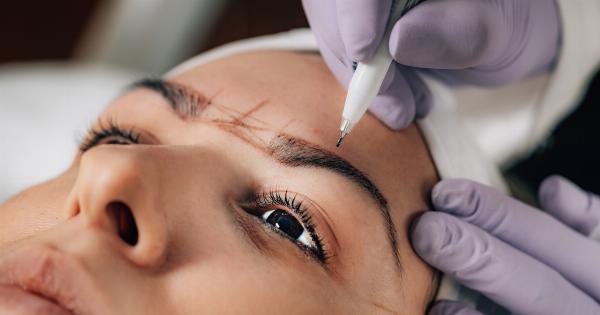Permanent waxing is a revolutionary beauty technique that combines the principles of science with the desire for long-lasting hair removal.
Unlike traditional waxing methods that offer temporary results, permanent waxing provides a more permanent solution for hair reduction. This article will explore the science behind permanent waxing, its benefits, the process involved, and its potential side effects.
The Science Behind Permanent Waxing
Permanent waxing utilizes advanced technology to target hair follicles at their root. The procedure involves the application of a specialized wax, which adheres to the hair and skin. As the wax hardens, it pulls the hair out from its follicle.
Over time, with regular treatments, the hair follicles become damaged, resulting in slower regrowth and thinner hair.
The Benefits of Permanent Waxing
1. Longer-lasting results: Compared to traditional waxing, where hair can regrow within weeks, permanent waxing offers the advantage of longer-lasting results.
With each session, the hair regrowth becomes progressively thinner, reducing the need for frequent waxing sessions.
2. Time-saving solution: Traditional waxing often requires frequent appointments and time-consuming maintenance. However, with permanent waxing, individuals can enjoy the convenience of reduced grooming efforts and better time management.
3. Cost-effective: Although permanent waxing may initially require a higher investment, over time, it proves to be a cost-effective choice. The reduction in hair growth reduces the frequency of salon visits, saving individuals both time and money.
4. No ingrown hairs: Ingrown hairs can be a common issue after traditional waxing, causing discomfort and blemishes. Due to the permanent damage caused to the hair follicles, permanent waxing significantly reduces the occurrence of ingrown hairs.
The Permanent Waxing Process
1. Consultation: A consultation with a trained aesthetician or dermatologist is the first step in starting the permanent waxing process.
This consultation will assess the client’s suitability for the treatment and discuss any potential risks or concerns.
2. Preparation: Before the waxing process, the treatment area needs to be cleaned and dried thoroughly. This ensures optimal wax adherence and reduces the risk of infection.
3. Application of specialized wax: The aesthetician applies the specialized wax to the treatment area using a spatula or other applicator. The wax is spread evenly in the direction of hair growth, allowing it to adhere to the hair and skin.
4. Wax hardening and removal: Once the wax is applied, it is left to harden for a short period. The hardened wax is then removed quickly, along with the trapped hair, in the opposite direction of hair growth.
This process is repeated until the desired hair reduction is achieved.
5. Post-treatment care: After the permanent waxing session, it is essential to follow any post-treatment care instructions provided by the aesthetician.
This may include avoiding direct sun exposure, using soothing creams, and moisturizing the treated area regularly.
Potential Side Effects of Permanent Waxing
While permanent waxing offers numerous benefits, it is essential to be aware of potential side effects:.
1. Skin irritation: Some individuals may experience temporary redness, swelling, or irritation in the treated area. This reaction typically subsides within a few hours or days.
2. Skin sensitivity: Permanent waxing may cause increased skin sensitivity, especially in those with pre-existing skin conditions or allergies. It is crucial to inform the aesthetician of any known sensitivities before the treatment.
3. Skin discoloration: In rare cases, individuals may experience temporary changes in skin pigmentation, leading to darkening or lightening of the treated area. This side effect is typically temporary but can persist for a few weeks or months.
4. Infection: Improper sanitation or inadequate post-treatment care can contribute to the risk of infection. It is vital to choose a reputable salon or dermatologist for the treatment and to follow all instructions for aftercare.
Conclusion
Permanent waxing offers a groundbreaking approach to hair removal, combining scientific advancements with beauty aspirations.
Through its ability to damage hair follicles, permanent waxing provides longer-lasting results, time-saving benefits, and reduced costs compared to traditional waxing methods. While potential side effects exist, these can be minimized by selecting a qualified professional and following proper aftercare instructions.
With the power of science, permanent waxing continues to revolutionize the beauty industry, offering individuals a long-lasting solution for hair reduction.






























